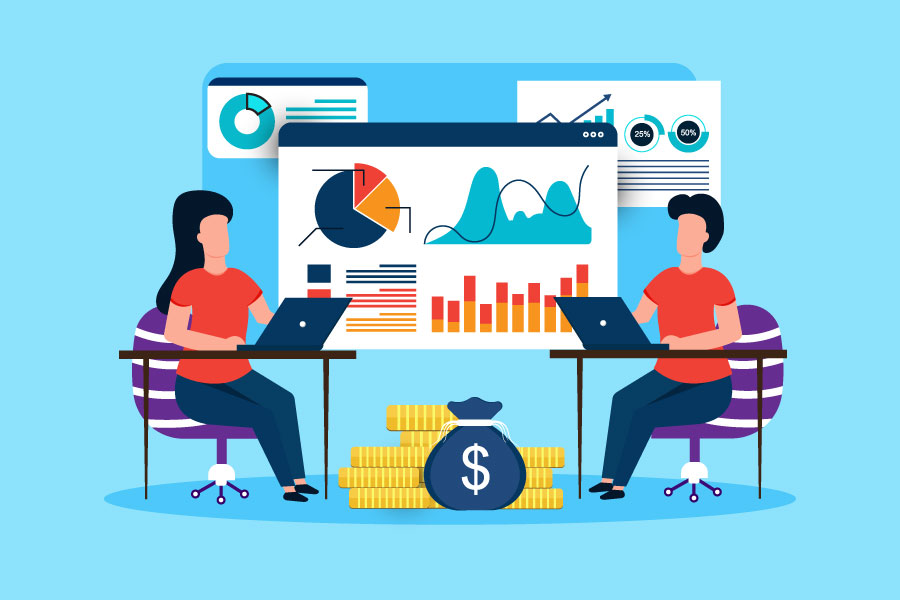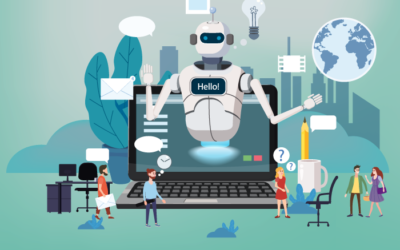In the current digital, fast-changing world, companies have become extremely dependent on software to facilitate business operations, customer service, and to stay competitive. However, with increasing technological growth to 2026, most organizations are finding that off-the-shelf solutions frequently do not meet their increasingly unique and expanding needs.
Ready-made applications may yield short-term convenience, but most are limited with regard to scalability, flexibility, and long-term payback. Conversely, bespoke system development provides a custom-made solution that best suits your business needs, processes, and future objectives.
This paper addresses the reason why investing in custom software in 2026 and further is one of the most intelligent strategic actions a company can take, with its focus on the long-term worth, scalability, and competitiveness.
Custom Software Is Built for Your Unique Business Needs:
Although businesses may be operating in the same industry, they do so differently. Off-the-shelf software is created to address the overall needs and to serve a broad market base. This model is effective in some cases, but it will seldom touch on the specific workflows, integrations, or customer experience your business needs.
Bespoke software is built to the specifications of your business, its processes, objectives, and problems. Increasingly, the developers can customize features to handle your existing operations instead of compelling your teams to fit a generic system. For example:
- A logistics company can create tools for route optimization according to its own delivery patterns.
- A healthcare provider has the opportunity to combine electronic health records (EHR) with the in-house diagnostics systems.
- As a retail brand, it is possible to create a customized CRM to operate customer reward schemes.
Custom software is better since it is tailored to meet your unique needs, hence fully optimized and with minimal or no handwork, and integrates well with other systems.
Gaining the Competitive Edge by Innovation:
The ability to employ technology effectively in businesses will be a more important factor of competitive differentiation in 2026. Bespoke software allows you to be more innovative than the rest of the competition, who rely on inflexible, one-size-fits-all software.
By being able to plan the design and development roadmap of your software, you are able to implement unique features, streamline customer experiences, and react to market trends more quickly as compared to using common applications. For instance:
- A financial company can combine AI-based analytics of customized investment information.
- A chain of hotels can use its own mobile applications to provide guest management and digital concierge services.
- An e-commerce company will be able to develop a recommendation engine that works best with the niche.
Developing customized tools and capabilities will provide your business with a unique technological edge, one that companies cannot easily duplicate with commercial software.
Seamless Scalability for Future Growth:
The most important aspect of long-term software success is scalability. The size of your business is increasing, and the amount of data, transactions, and the number of people interacting with your business have risen. Solutions off the shelf can be limited by user numbers, storage capacity, or features, and companies are forced to either upgrade their licenses or move to new systems.
Bespoke software is scalable in nature. As your business grows, you can add new features, modules, or integrations without having to rebuild the entire system. Developers are in a position to look ahead to future expansion as well as design architecture that allows it to support more workloads or enable more functionality without any hitch.
For example:
- Startups have the capability to start with a minimal viable product (MVP) and grow it to an enterprise-level platform.
- Manufacturers are able to increase the ERP capacity to add new production lines or suppliers.
- Service providers will be able to incorporate new APIs when they embrace new technologies such as AI or IoT.
As scalability is inherent in your digital infrastructure, your software is a long-term investment, as opposed to a short-term one.
Improved Integration with Existing Systems:
Numerous companies are already implementing numerous tools CRM, ERP, accounting software, Human Resource platforms, and data analytics systems. Ready-to-shelf applications can be hard to integrate and incompatible with, creating silos of data as well as inefficiencies.
Personalized software, in its turn, is created to harmonize well with your current technology environment. It is able to integrate several systems via APIs, harmonize databases, and simplify information flow across the departments.
The result? Live access to correct information in all business departments, improved cooperation, and less duplication of effort. Not only does this boost productivity, but it also makes sure that your software infrastructure is flexible and connected with new technology as it comes.
Improved Data security and protection:
Cyberspace threats are evolving at unprecedented rates, and by 2026, organizations will have to contend with even higher evolved attacks. The common software, which is also off-the-shelf, may fall into the hands of hackers who may take advantage of its regular vulnerabilities.
The custom software ensures that this risk is reduced by applying security measures that are specific to your infrastructure. Developers are also free to develop their own authentication, encryption, and access controls that may be consistent with your internal security policies. Also, the codebase is exclusive, which means it is not as vulnerable to mass-exploit attacks as mass-distributed commercial products.
Also, custom solutions make it much easier to comply with the industry regulations (GDPR, HIPAA, or ISO 27001) since you are able to apply the data-handling practices that are specifically visible to your business operations.
Cost Efficiency Over the Long Term:
Another myth is that custom software is always more costly than off-the-shelf software. Custom software is more expensive in the short term but yields a much greater ROI over time.
Here’s why:
- No ongoing license costs/user subscriptions.
- None of the extras you need and never take advantage of.
- Reduce the cost of integration and migration in the future.
- Less reliance on third-party vendors to update or make changes.
Bespoke software is able to grow as your business does, i.e., you invest once and constantly upgrade the software as your requirements change, instead of having to change systems every few years.
Ownership and Full Control:
Off-the-shelf software places your company at the mercy of the vendor when it comes to updates and restrictions on features. You can even be denied access when the provider ceases to support or changes pricing structures.
In-house software provides you with full ownership of the code, features, and future course. This autonomy allows you to:
- Raise updates according to your internal requirements.
- Customize or add features without limitations by the vendors.
- Continuing with the change of technology partners.
It is also important to have complete control to make sure your digital infrastructure is future-proof. You determine the scalability, integration, and advancement of technology and align the technology with the business strategy.
Better User Experience (UX) and Productivity:
Increased User Experience (UX) and Productivity.
The efficiency and ease of use of software interfaces can oftentimes determine how well employees work, as well as how content customers are. Off-the-shelf solutions are meant to be adopted on a mass scale, so they might have complexity that is not needed, or they might not have what your team requires on a daily basis.
Bespoke software is user-friendly. Developers also collaborate with stakeholders to learn about workflows, bottlenecks, and usability preferences. This results in:
- Better interfaces and more rapid navigation.
- Automated processes that get rid of repetitive operations.
- Dashboards and reporting that are applicable to your KPIs.
Enhanced user experience means less training, fewer errors, and increased productivity.
Long-term Reliability and Maintenance:
Commercial updates to software are based on the roadmap of the vendor. In the event of the discontinuation of a feature or the shutdown of the company, you can lose essential functionality.
Tailor-made software removes that uncertainty. Helping you to upgrade, patch, and optimize your performance on your schedule, with dedicated support or internal maintenance teams. This provides constant reliability and uptime to keep the business operations going.
Moreover, the use of documentation and modular code makes updating procedures in the future cost-effective and efficient.
Placing Technological Trends in 2026:
By 2026, the focus of business competitiveness will be on new technology such as artificial intelligence (AI), machine learning (ML), Internet of Things (IoT), blockchain, and edge computing. Off-the-shelf software tends to lag behind all of these improvements because of slower updates and generic feature offerings.
These innovations can be integrated early and quickly using custom software. For example:
- Use AI models to implement predictive analytics into your system.
- Use blockchain to access secure and verifiable records of transactions.
- IoT devices can be connected and used to monitor the performance of equipment in real time.
This forward-looking flexibility places your company ahead of technological change as opposed to being on the run.
Strengthening Your Brand Identity:
Your brand is directly revealed in software. An individual, tailored platform will be able to support your identity with a branded interface, customized customer experience, and unique digital experience.
It can be a unique mobile application, a web portal, an enterprise dashboard, or anything that is built based on your brand tone and design philosophy, and helps you be noticed in a competitive market. It shows professionalism, innovation, and customer focus, which are major criteria of brand loyalty and confidence.
A Future-Proofed Business:
Custom software is a long-term business sustainability. With changing markets and evolving technologies, your systems have to change, as well. This flexibility is based on custom solutions that will make your digital ecosystem remain relevant for many years later.
Well-architected custom software enables the implementation of modular updates, migration to the cloud, and cross-platform interoperability, which will allow your business to expand without incurring expensive system upgrades.
Final Thoughts:
By 2026, the digital economy will reward businesses that think ahead, i.e., ones that invest in technology that fits their objectives, rather than the off-the-shelf constraints.
Custom software development provides:
- Flexibility and innovation.
- Scalable and safe infrastructure.
- Autonomy, ownership, and cost efficiency in the long run.
- Differentiated and agile competitive advantage.
Simply put, custom software is not a tool, but an investment in the future of your business. It is the organizations that accept this change today that will be the leaders in their industries tomorrow with technology that is tailored to their vision, operations, and success.
Future-Proof Your Business with Custom Software Solutions
At DevRaulic, we create innovative, scalable, and secure software tailored to your business goals. From custom web platforms to enterprise-grade systems, our expert developers help you streamline operations, enhance user experience, and stay ahead in the fast-evolving 2026 digital landscape. Build technology that grows with you — not against you.
Got time? Explore more!
The Role of Generative AI in the 2026 Software Development Lifecycle
Three people with VR headsets analyzing a digital dashboard of business data, highlighting data-driven decision making.
The State of UI/UX in 2026: Designing for the Future
Three people with VR headsets analyzing a digital dashboard of business data, highlighting data-driven decision making.
Case Study: How We Helped a Mid-Sized Company Optimize Their Mobile App’s Performance
Three people with VR headsets analyzing a digital dashboard of business data, highlighting data-driven decision making.




